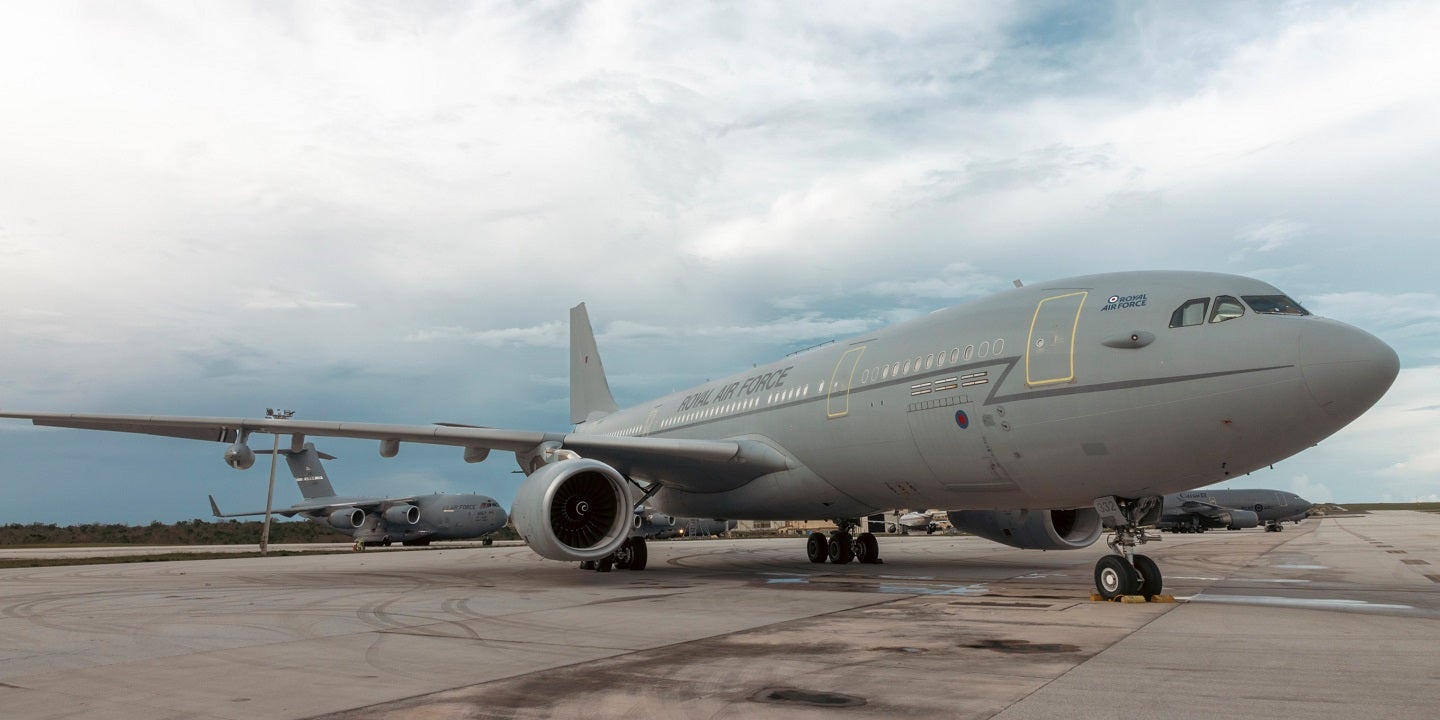
The UK Royal Air Force (RAF) Voyager multi-role tanker aircraft provided critical support during the Pacific air exercise Mobility Guardian 23.
The RAF initially deployed Voyager to Eilson Airbase in Alaska, where crews added more fuel on board and refuelled the aircraft to maximise the tanker’s capabilities.
From Alaska, and took to its maximum take-off weight, Voyager rendezvoused with an RAF A400 Atlas, over northern Alaska that was flying non-stop to Guam to also take part in the exercise.
After fuel transfer the Voyager then climbed to allow a flight at maximum fuel efficiency, before again coming together with the Atlas over the Aleutian Islands in the Pacific, to transfer more fuel to allow the Atlas to complete its flight from the UK to Guam.
Voyager then returned to Eilson to collect passengers again before carrying on to Guam to join the exercise. The tanker had carried out two of its principal roles: strategic long-range air-to-air refuelling and passenger transportation.
On arrival at Anderson Air Force Base in Guam, Voyager quickly deployed on its first exercise sortie: a tactical air-to-air refuelling task, where the RAF aircraft fuelled US Navy F/A-18’s, EA-18’s, US Marine Corps F-35B’s and French Air and Space Force Rafales.

US Tariffs are shifting - will you react or anticipate?
Don’t let policy changes catch you off guard. Stay proactive with real-time data and expert analysis.
By GlobalDataDuring the first week of the exercise, Voyager integrated into a fleet of tanking aircraft from the US Air Force, French Air and Space Force and the Royal Canadian Air Force to conduct fast jet air-to-air refuelling over the western Pacific.
These sorties support various exercises that test all participants in scenarios that are designed to overcome the ‘the tyranny of distance’. For the RAF Voyager crews this means extended flights at significant distances from land masses in a remote location to conduct tanking operations and the opportunity to work with aircraft from partner nations.
“This is an extremely important exercise for the Voyager force as it is rare for us to be able to exercise the many roles the aircraft can carry out due to the high operational tempo of the force. The training benefit to the Voyager force personnel deployed on the exercise is therefore vital,” the RAF Voyager Commander of the exercise, Mike Willers, stated.
Making air-to-air refuelling sustainable
Traversing such vast distances from the UK to Alaska and then on to Guam raises sustainability concerns, especially as the geopolitical environment has made the world that much smaller as the US, its allies and China mobilise in various theatres around the world – from the High North, to Nato’s eastern flank and all the way to the Indo-Pacific.
That is why, in April this year, the RAF completed an air-to-air refuelling flight using a Voyager tanker powered by a 43% blend of sustainable aviation fuel (SAF), according to the UK Ministry of Defence (MoD).
The MoD said that flying from RAF Brize Norton, the tanker operated over the North Sea before returning to its home base via Farnborough. The Voyager tanker also conducted air-to-air refuelling serials with RAF Typhoon fighters as part of planned training.
Supporting the RAF’s ambitions to be Net Zero by 2040, the Voyager flight was part of an existing task from the Chief of the Air Staff to gather the required data to inform the longer-term transition away from fossil fuels.
As the geopolitical climate intensifies around the world, the more armed forces will be need to maintain a constant state of military readiness, and therefore a greater need for energy sources.



